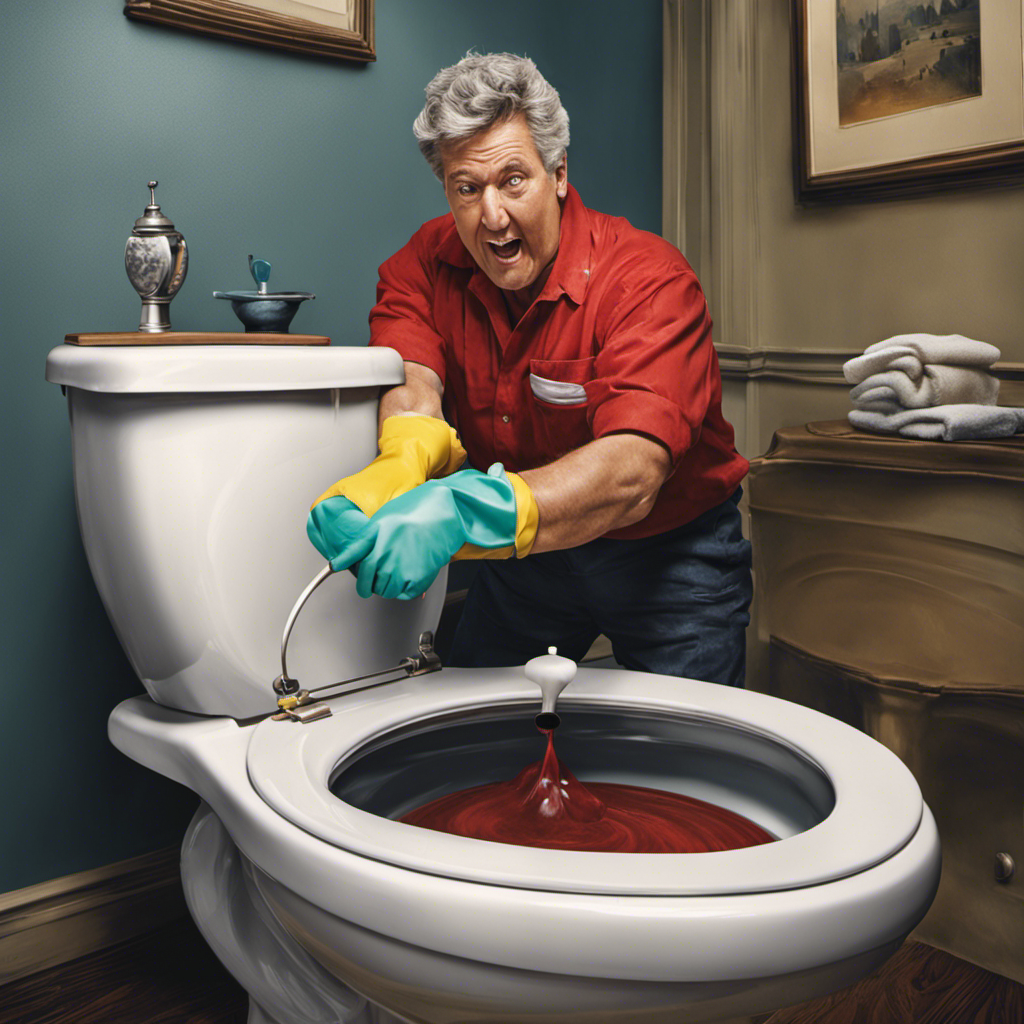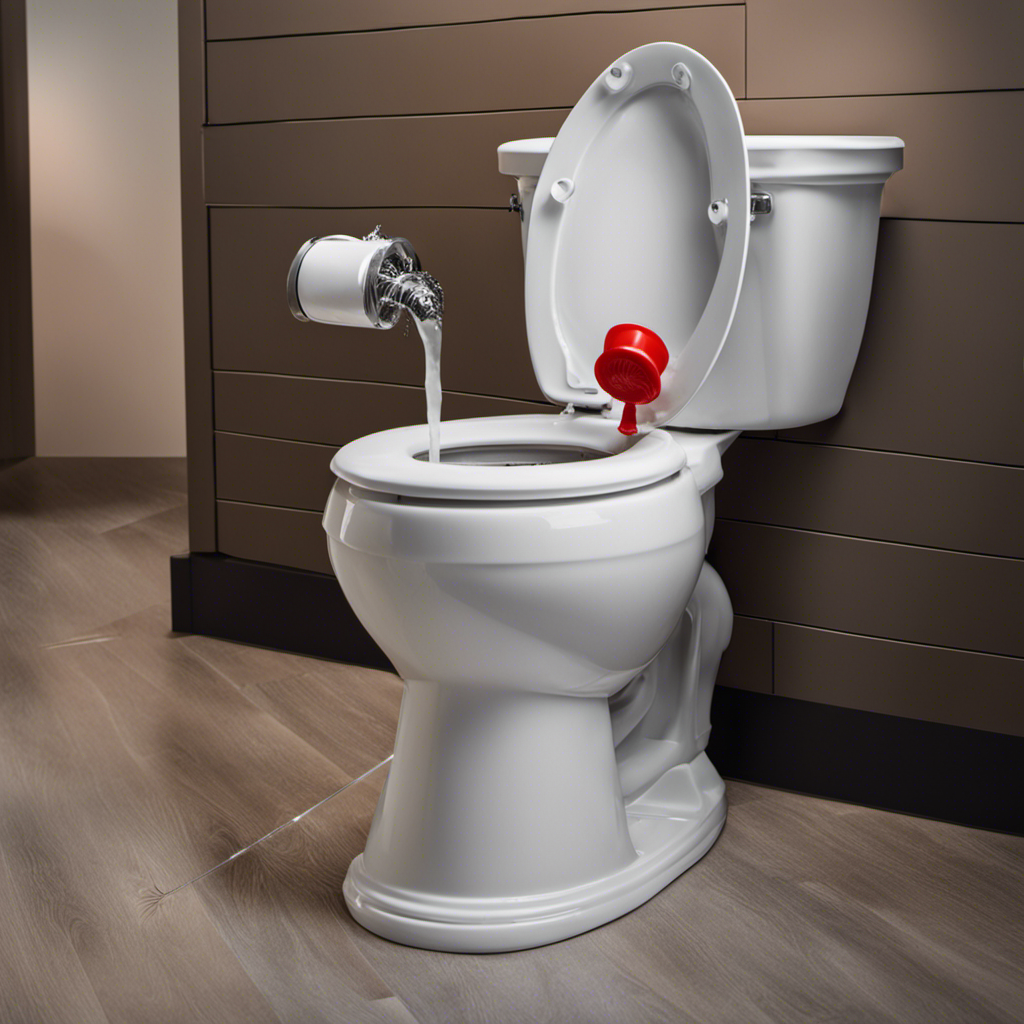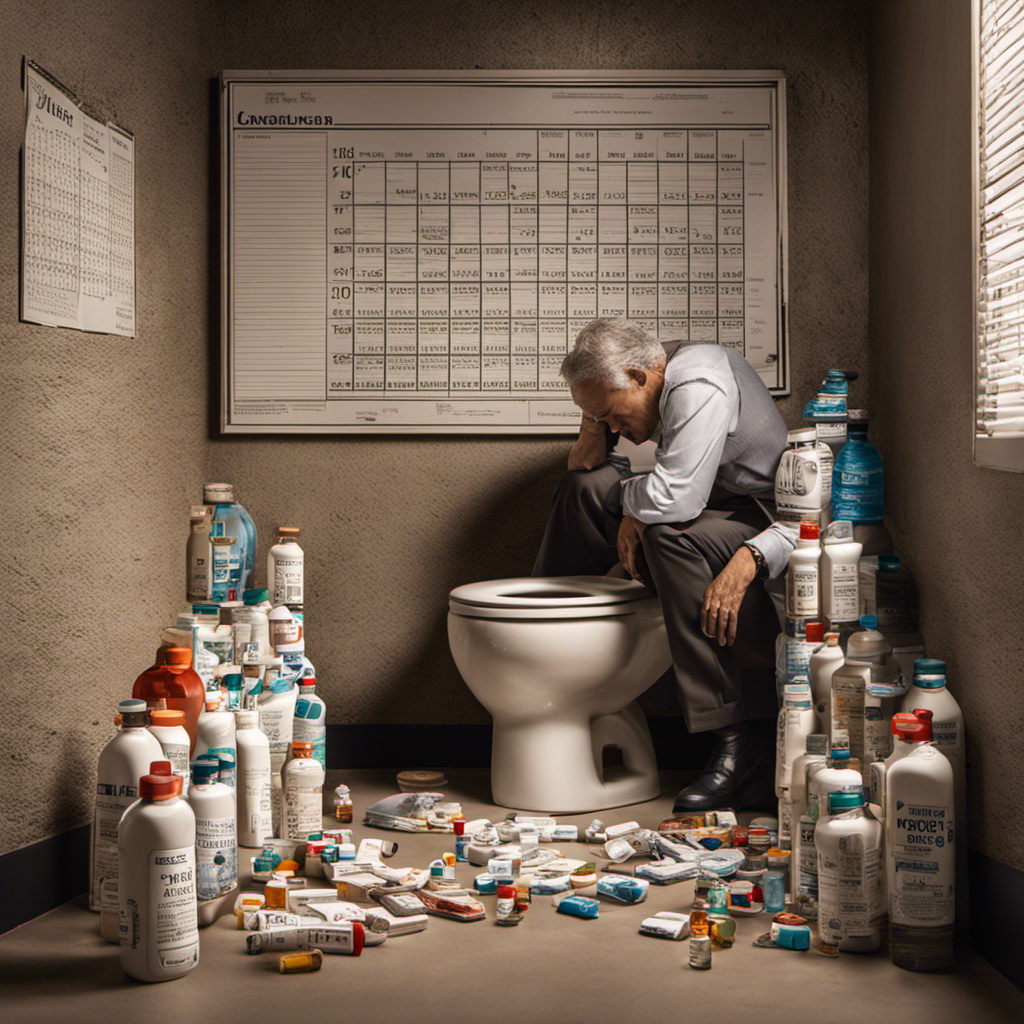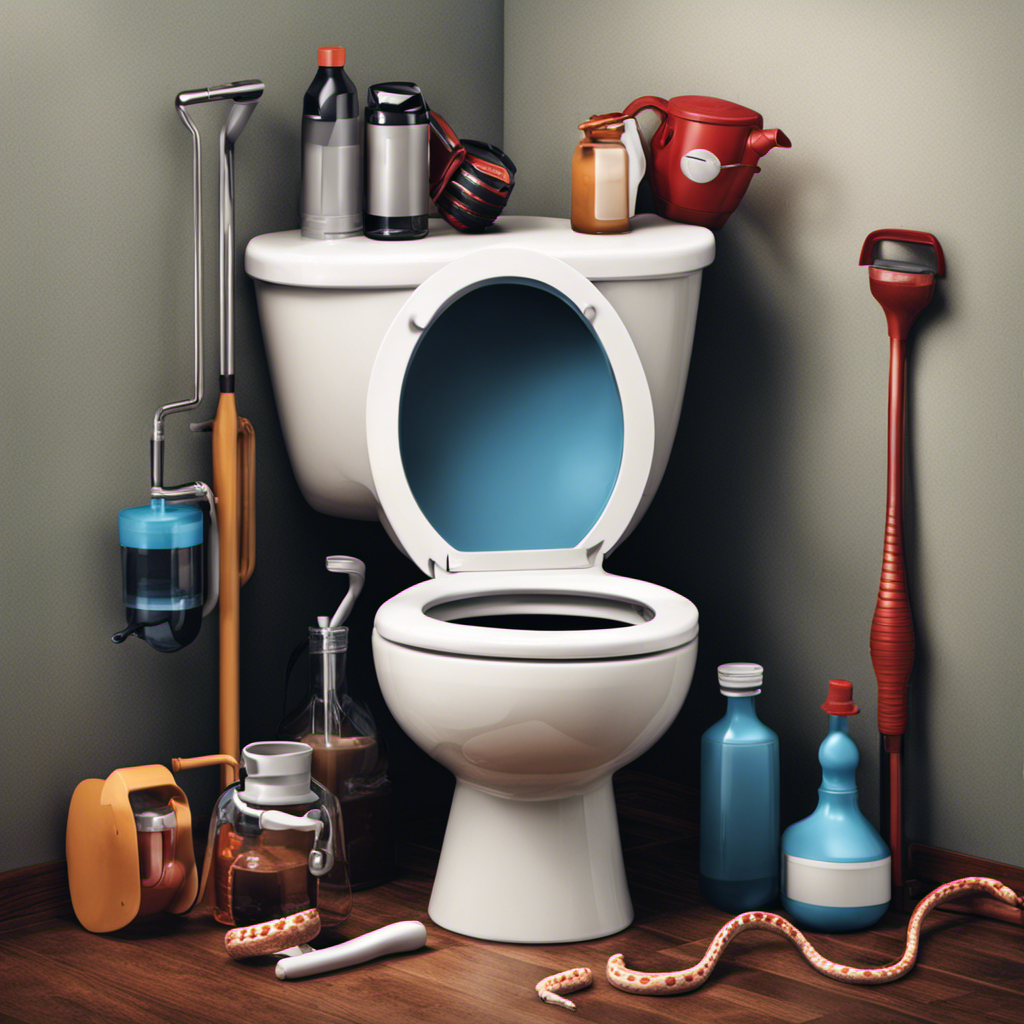Hey there!
Did you know that an overflowing toilet is one of the most common plumbing problems homeowners face? It can be quite a messy and inconvenient situation to deal with. But don’t worry, I’ve got you covered!
In this article, I’ll guide you through step-by-step instructions on how to unclog a toilet that is overflowing. We’ll discuss the causes of toilet clogs, safety precautions to take before getting started, the tools you’ll need, and preventive measures to avoid future clogs.
So let’s get started and tackle that pesky clog together!
Key Takeaways
- Causes of an overflowing toilet include excessive toilet paper usage, flushing non-flushable items, and buildup of debris in the pipes over time.
- Signs of an overflowing toilet include water rising to the brim and a gurgling sound when flushing.
- Safety precautions before unclogging include turning off the water supply, protecting the floor, wearing gloves and protective clothing, and ventilating the area.
- Tools and alternative methods for unclogging include a plunger, an auger, hot water, baking soda and vinegar mixture, or a wire hanger. Proper tools are more effective than alternative methods.
Causes of an Overflowing Toilet
One of the main causes of an overflowing toilet is a clog in the pipes. Clogs can occur due to various reasons, but the most common ones include excessive toilet paper usage, flushing non-flushable items like wipes or feminine hygiene products, or a buildup of debris over time.
If you notice any signs of an overflowing toilet, such as water rising to the brim or a gurgling sound when you flush, it’s important to act quickly to avoid further damage. Ignoring the issue can lead to water damage and potential flooding.
Safety Precautions Before Unclogging
Before attempting to fix a clogged toilet that is overflowing, it’s important to take safety precautions. Here are the steps to ensure your safety:
-
Turn off the water supply: Locate the shut-off valve near the base of the toilet and turn it clockwise to stop the water flow.
-
Protect the floor: Lay down towels or old newspapers to prevent any water damage to the floor.
-
Wear gloves and protective clothing: To avoid contact with harmful bacteria or chemicals, wear rubber gloves and protective clothing.
-
Ventilate the area: Open windows or use a fan to circulate fresh air and prevent the buildup of unpleasant odors.
-
Use a plunger or auger: Depending on the severity of the clog, use a plunger or an auger to clear the obstruction.
Taking these safety precautions is essential before attempting to fix an overflowing toilet.
Now, let’s move on to the next section about the tools needed for unclogging a toilet.
Tools Needed for Unclogging a Toilet
To successfully clear a clog in your toilet, you’ll need a plunger and possibly an auger. These tools are essential in unclogging a toilet and should be readily available in your home. The plunger creates suction to dislodge the clog, while the auger is used for more stubborn blockages. It’s important to use these tools correctly to avoid any further damage or mess.
Here are some common mistakes to avoid when unclogging a toilet:
-
Using too much force with the plunger, which can cause water to splash out.
-
Flushing the toilet repeatedly, as this can lead to an overflow.
-
Not wearing gloves or protective clothing, which can expose you to bacteria.
If you don’t have access to a plunger or auger, there are alternative methods you can try. These include using hot water, a mixture of baking soda and vinegar, or a wire hanger to manually remove the clog. However, it’s important to note that these methods may not be as effective as using the proper tools.
Step-By-Step Guide to Unclog a Toilet
If you’re experiencing a clog in your toilet, start by grabbing a plunger and positioning it over the drain.
Here’s a step-by-step guide to unclog a toilet:
- Step 1: Position the toilet plunger over the drain, ensuring a tight seal.
- Step 2: Push down firmly on the plunger, then pull back forcefully, creating suction.
- Step 3: Repeat the plunging motion several times, gradually increasing the force.
- Step 4: If the plunger doesn’t work, try using a toilet auger or a drain snake to break up the clog.
- Step 5: If all else fails, consider using alternative methods like a baking soda and vinegar mixture or a chemical drain cleaner, following the instructions carefully.
Remember to always exercise caution when using chemicals and to avoid using excessive force to prevent any damage to your toilet.
With these steps and alternative methods, you should be able to successfully unclog your toilet.
Preventive Measures to Avoid Future Toilet Clogs
One way to prevent future toilet clogs is by regularly maintaining the plumbing system. Proper toilet maintenance is essential to avoid common toilet clogging mistakes. Here’s a step-by-step guide on how to maintain your toilet and keep it clog-free.
-
Regularly clean the toilet bowl and tank to remove any buildup of mineral deposits, mold, or bacteria.
-
Check the flush valve and flapper for any signs of wear or damage. Replace them if necessary.
-
Inspect the toilet’s fill valve and adjust the water level to the recommended height.
-
Avoid flushing non-flushable items like wipes, feminine hygiene products, or excessive amounts of toilet paper.
-
Teach everyone in your household proper flushing techniques to prevent unnecessary clogs.
-
Consider installing a toilet auger or plunger for quick and effective unclogging if needed.
Frequently Asked Questions
Can I Use Boiling Water to Unclog a Toilet?
Yes, you can use boiling water to unclog a toilet. However, it is important to be cautious as boiling water can cause burns. There are also alternative methods for unclogging toilets.
What Should I Do if the Toilet Continues to Overflow After Using a Plunger?
If the toilet continues to overflow after using a plunger, I would try alternative methods like using a toilet auger or a homemade drain cleaner. To prevent future clogs, avoid flushing non-flushable items and regularly maintain the toilet.
Will Pouring Bleach Down the Toilet Help Unclog It?
Pouring bleach down the toilet may not be the best solution to unclog it. There are alternative methods and unclogging products available. It’s important to consider other options before resorting to bleach.
Are There Any Natural Remedies for Unclogging a Toilet?
I’ve tried many homemade toilet cleaners, but the most effective one was a mixture of baking soda and vinegar. It bubbled and fizzed, breaking down the clog and unclogging the toilet.
How Long Does It Usually Take to Unclog a Toilet Using a Plumbing Snake?
When using a plumbing snake to unclog a toilet, the time it takes can vary depending on the severity of the clog. However, there are alternative methods available that may be more effective.
Conclusion
In conclusion, my dear reader, when faced with the daunting task of unclogging an overflowing toilet, fear not! Armed with the knowledge and tools I have shared with you, you can conquer this sticky situation.
Just remember to approach it with caution and take the necessary safety precautions. Step-by-step, you will navigate the murky waters of toilet clogs and emerge victorious. And, oh, how sweet the victory will taste!
So, go forth, my friend, and may your toilets forever flow freely and unobstructed.










